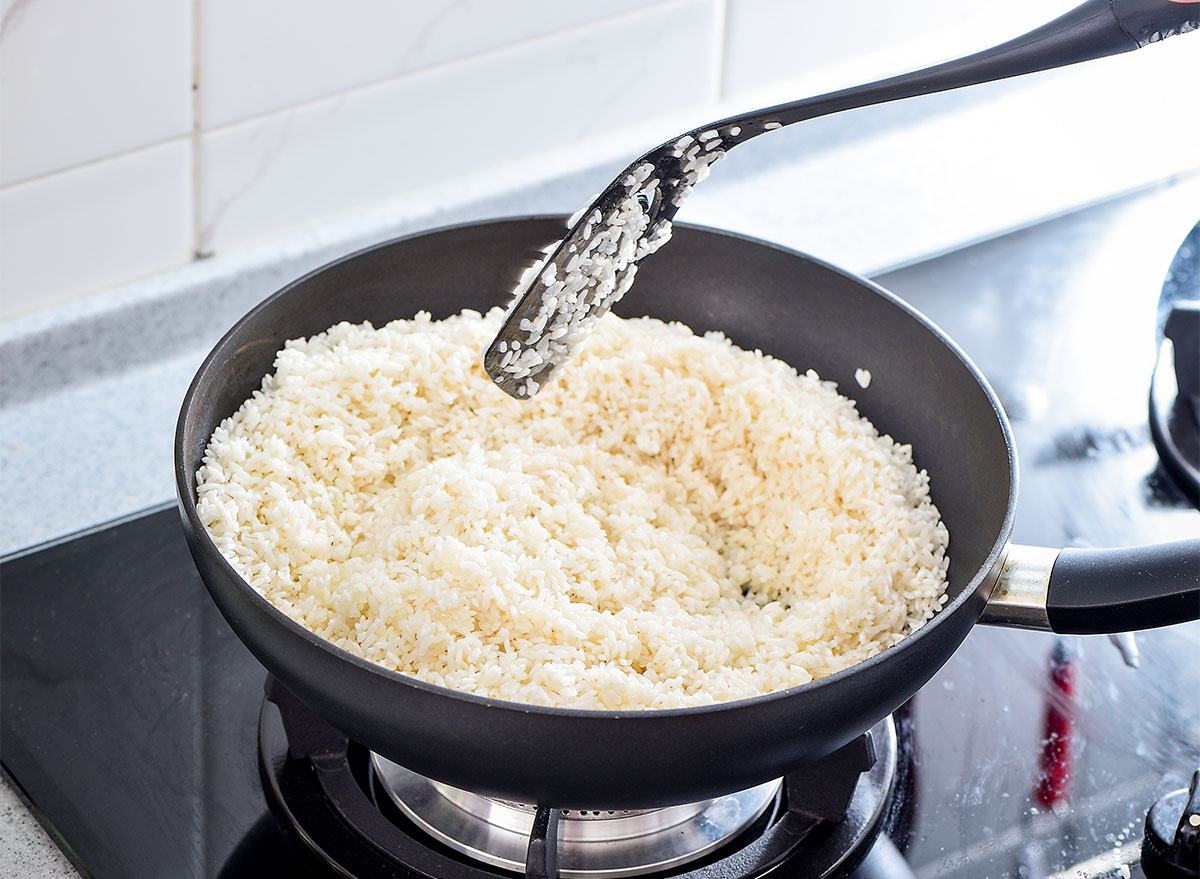The #1 Way to Make Your Rice Free of Toxins

When it comes to everyday meal staples, it can be hard to top rice: The versatile grain is a fixture on dinner tables around the globe, with about 486.62 million metric tons consumed from 2018 to 2019. And while rice is a major source of nourishment for billions, it’s also a carrier of a major naturally occurring toxin in the form of arsenic, a water-soluble toxin that has been classified as a Group 1 carcinogen by the International Agency for Research on Cancer.
Arsenic accumulates about ten times as much in rice as other grains due to the fact that it’s grown in flooded paddy fields. The toxin accumulates most in the outer bran layer, which is why unpolished brown rice—which contains 75 to 90 percent more nutrients—is of particular concern. Arsenic can be especially dangerous for babies and children who ingest large quantities of it.
But, there’s good news: a new study has found that there’s a simple cooking method that can remove most of the arsenic found in rice without stripping it of the elements that make it nutritious. (Related: 21 Best Healthy Cooking Hacks of All Time.)
The study, which comes from researchers at the University of Sheffield in the U.K., has found that the “parboiling with absorption method” (PBA) can remove 50 percent of the naturally occurring arsenic found in brown rice and 74 percent in white rice.
“Our aim was to optimize the method to remove arsenic while keeping maximum nutrients in the cooked rice,” Manoj Menon, an environmental soil scientist in the department of geography at the University of Sheffield and lead author of the study said in a statement. “Our newly developed method, PBA, is easy and home-friendly so that everyone can use it.”
The simple cooking process involves boiling water at a four-to-one ratio to the quantity of rice, adding the grains once the water is rolling, and cooking the rice for five minutes before discarding the water (which will contain the removed arsenic). Then, simply refill the cooking vessel with a two-to-one ratio of fresh water-to-rice, cover, and cook until the water has all been absorbed.
Menon tells Eat This, Not That! that knowing the quality of rice you buy can be hard to establish—and even rice labeled “Parboiled” is processed in a different way, and shouldn’t be confused with the method analyzed in this study. Plus, “even though brown rice is nutritionally superior to white rice, as our data shows, it contains more arsenic,” Menon explains. “With our new method, we are able to significantly reduce arsenic exposure without reducing the loss of key nutrients.”
Menon says the team also tested other rice cooking methods, such as rinsing and soaking, but they “are not as effective as PBA in removing arsenic.”
That’s why the PBA method can be so important to use—especially if you’re cooking for your family. “Infants and children are more vulnerable to arsenic exposure than adults,” Menon explains. “In some cultures, cooked rice is used for weening, [which is why] this method is appropriate and recommended. We know that not every rice marketed in the U.K. is safe for infants [or] children as we found out in our earlier investigation.”
For more healthy cooking tips, make sure to sign up for our newsletter.








